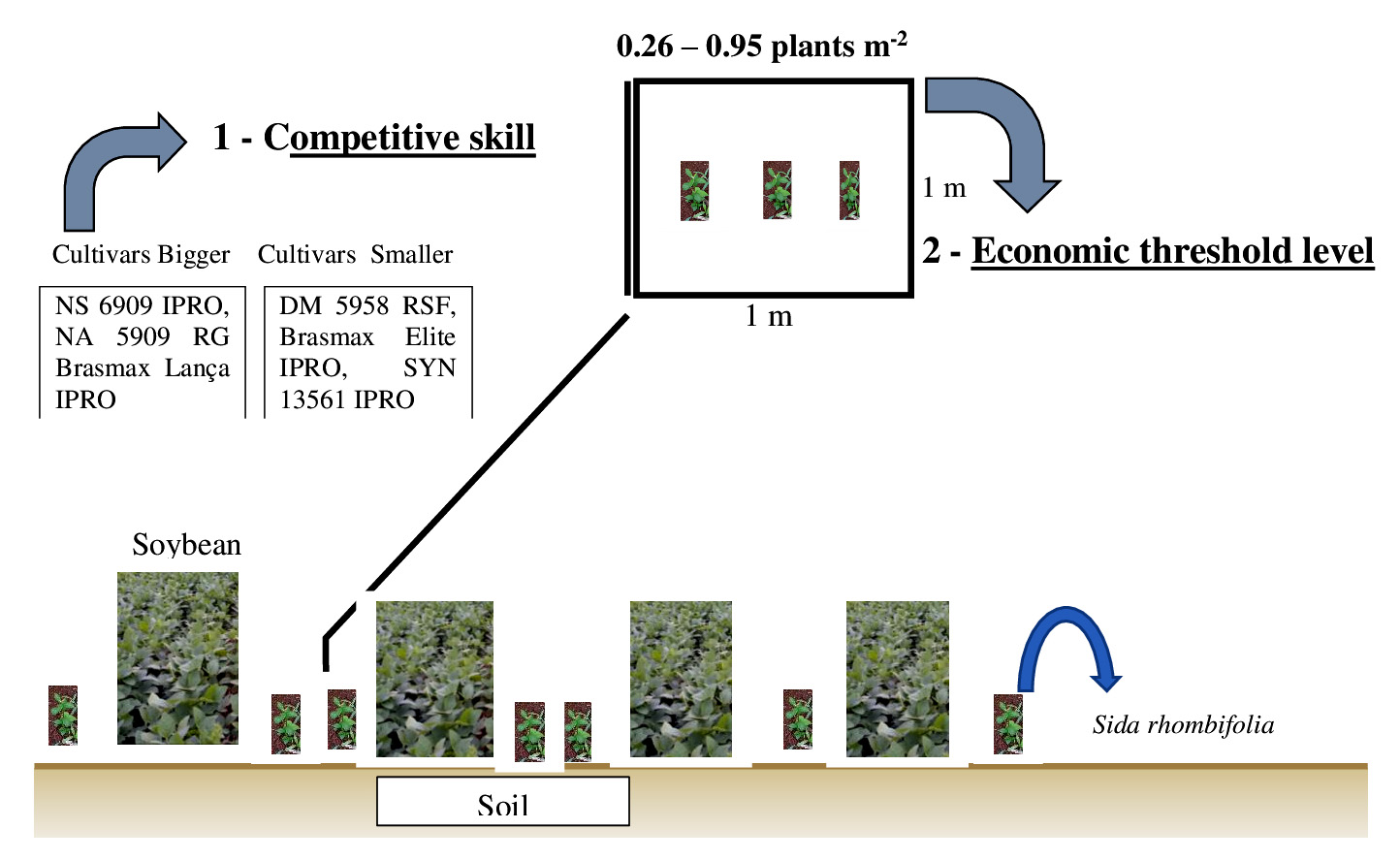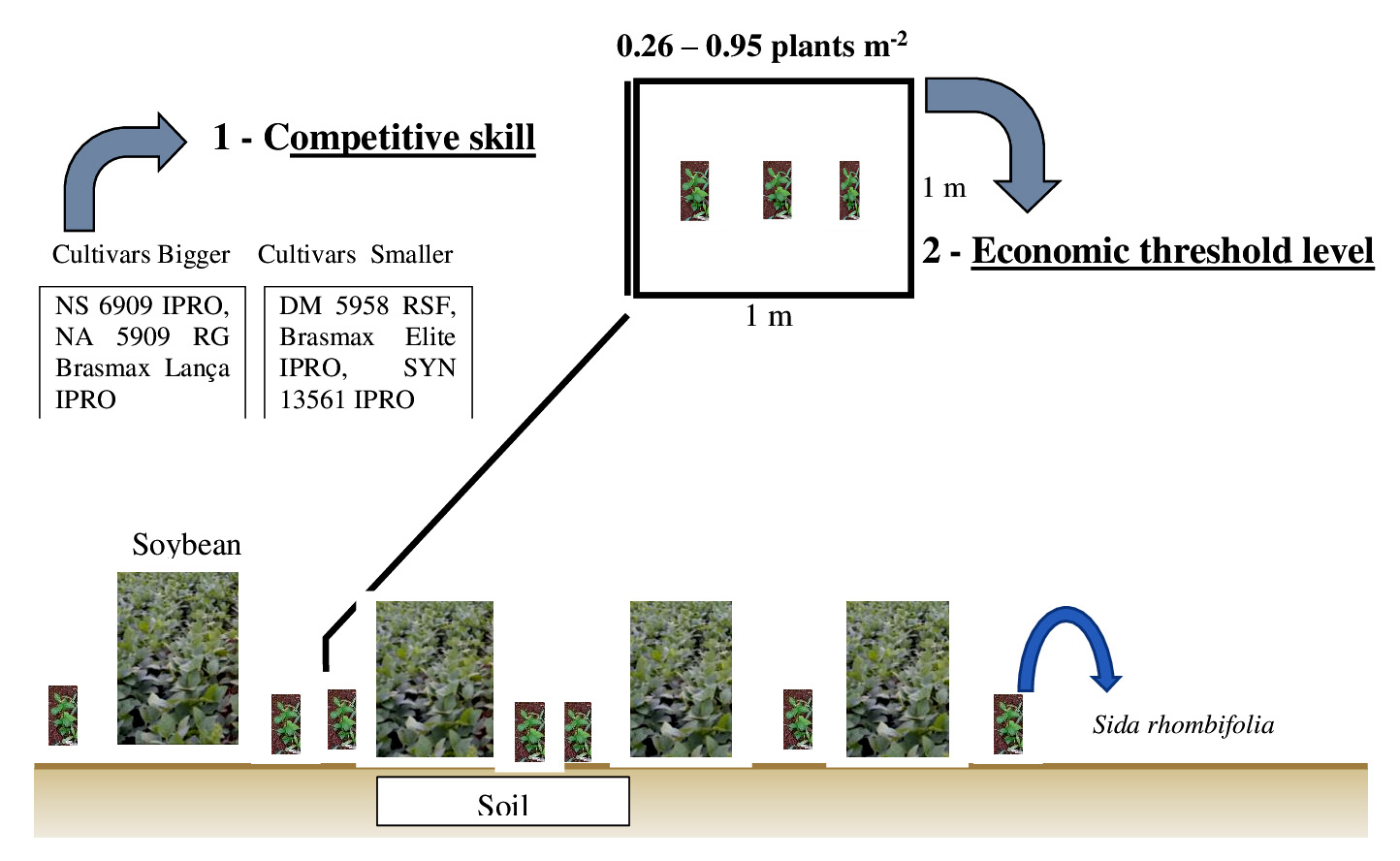Interference and threshold level of Sida rhombifolia in transgenic soybean cultivars
DOI:
https://doi.org/10.48162/rev.39.086Palabras clave:
Glycine max, escoba dura, manejo integrado de malezasResumen

This study aimed to assess the interference and threshold level (TL) of Sida rhombifolia, the arrowleaf sida, competing with different soybean cultivars. The treatments comprised different soybean cultivars (NS 6909, NA 5909, DM 5958, Brasmax ELITE, Brasmax LANÇA, and SYN 13561) and densities of arrowleaf sida plants per square meter (m-2) (0, 2, 3, 4, 9, 15, 16, 23, 22, and 58; 0, 2, 3, 3, 6, 6, 10, 11, 18, and 47; 0, 3, 4, 7, 8, 10, 11, 13, 15, and 24; 0, 1, 4, 6, 12, 18, 19, 31, 44, and 50; 0, 4, 5, 6, 9, 13, 17, 20, 20, and 47; 0, 2, 3, 5, 9, 11, 15, 18, 29, and 30, respectively) for each cultivar. Cultivars NS 6909, NA 5909, and Brasmax Lança were more competitive than DM 5958, Brasmax Elite, and SYN 13561. The TL values varied from 0.55 to 0.95 plants m-2 for cultivars NS 6909, NA 5909, and Brasmax Lança, which exhibited greater competitiveness with arrowleaf sida. The lowest values of TL varied from 0.26 to 0.61 plants m-2 for cultivars DM 5958, Brasmax Elite, and SYN 13561, which had less competitiveness with weed.
Highlights
- The rectangular hyperbola model adequately estimates the grain yield losses of soybean cultivars.
- The density of arrowleaf sida plants was the variable that best fitted the rectangular hyperbola model.
- Soybean cultivars NS 6909 IPRO, NA 5909 RG, and Brasmax Lança IPRO are the most competitive in the presence of arrowleaf sida.
- The levels of economic damage decrease with the increase in grain yield, in the soybean price, with the reduction in the cost of controlling arrowleaf sida and the herbicide efficiency.
Descargas

Descargas
Publicado
Cómo citar
Número
Sección
Licencia
Derechos de autor 2022 Revista de la Facultad de Ciencias Agrarias UNCuyo

Esta obra está bajo una licencia internacional Creative Commons Reconocimiento-NoComercial-CompartirIgual 3.0.
Aquellos autores/as que tengan publicaciones con esta revista, aceptan las Políticas Editoriales.










.jpg)




